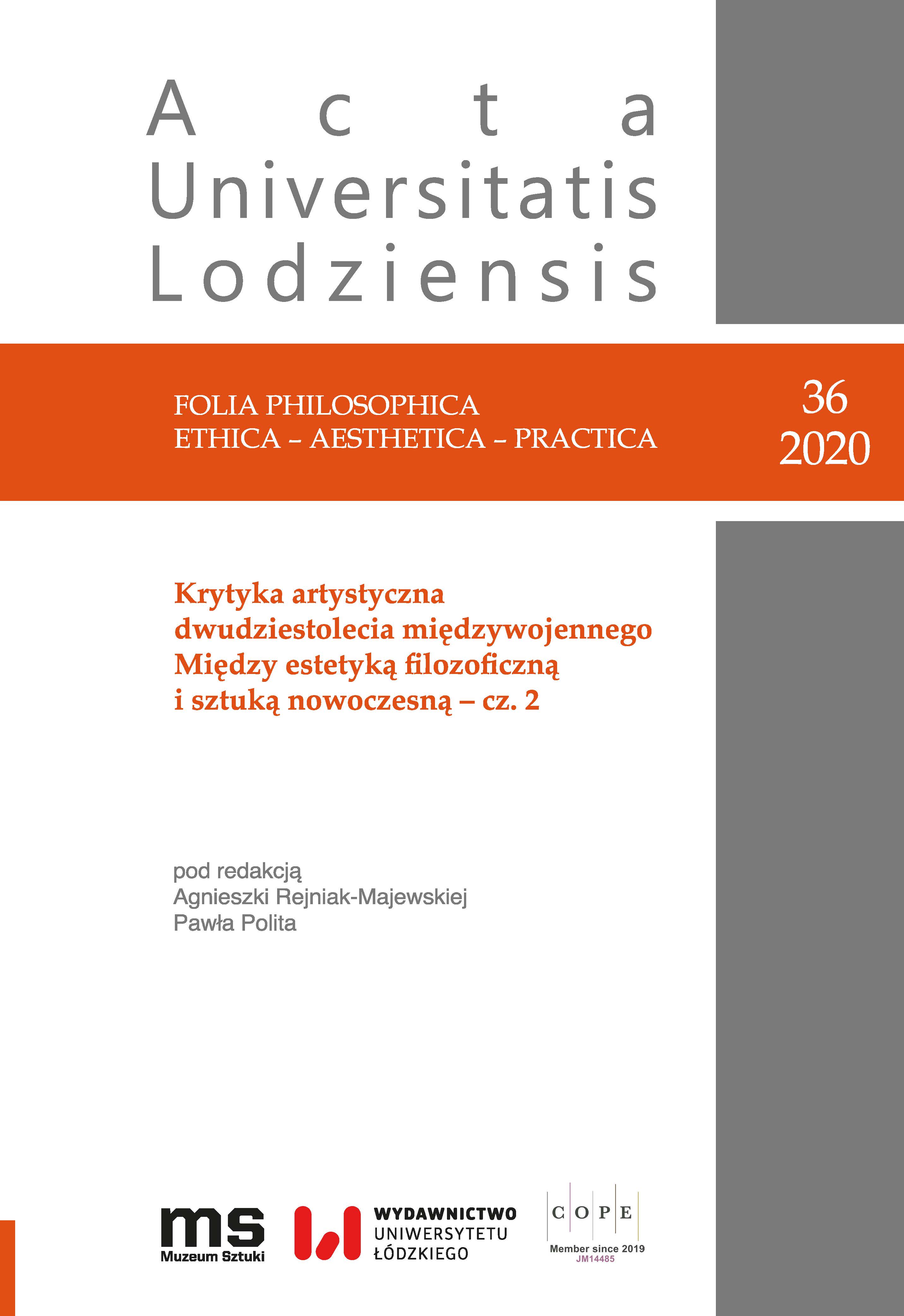Docieranie do rdzenia rzeczy. Współzależność form życia i sztuki w esejach Debory Vogel
Reaching for the Heart of the Matter. Interdependence of Forms of Art and Life in Debora Vogel’s Essays
Author(s): Anna MisiakSubject(s): Philosophy, Literary Texts, Fine Arts / Performing Arts
Published by: Wydawnictwo Uniwersytetu Łódzkiego
Keywords: Debora Vogel; Lu Märten; Jakob von Uexküll; modern art.; abstraction and objectivity; banality; art and life
Summary/Abstract: In this article, Debora Vogel (1900–1942) is depicted as one of the most important art critics and theorists of the 1930s. In Polish as well as in Yiddish she designed a set of ideas both elitist and, at the same time, most tightly related to everyday-life in which art was considered essential to life and „life” itself – in the sense of a banal and eternal ballad. Behind this thought we see, quite substantially, the art of Marc Chagall. His paintings served Vogel as proof of the main thesis of avant-gardism that content equals form. The equal status of life and art is researched by Vogel through the lens of up-to-dateness – something she comprehended as a construction of reality in her work, not as an art manifesto or an expression of political views. Starting from Hegel’s aesthetics, the Lemberg-based intellectual moved on to materialist dialectics and became a follower of Lu Märten, the pioneer of Marxist aesthetics. Vogel’s poetics of life and her conceptions of art were versatile, rooted in philosophy, i.a. in Jakob von Uexküll’s theory of subjective perception. The latter’s conception of a functional circle contributing to a turn in the perception of the avant-garde, is reviewed in the article. Finally, several questions are put forth referring to the relevance of Henri Bergson’s and Georg Simmel’s thoughts for Vogel’s comprehension of art.
Journal: Acta Universitatis Lodziensis. Folia Philosophica. Ethica - Aesthetica - Practica
- Issue Year: 2020
- Issue No: 36
- Page Range: 13-27
- Page Count: 15
- Language: Polish

